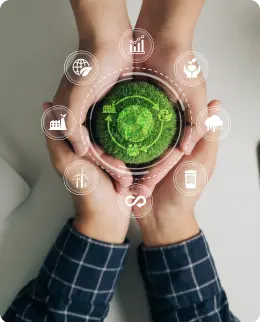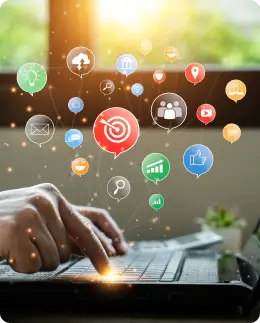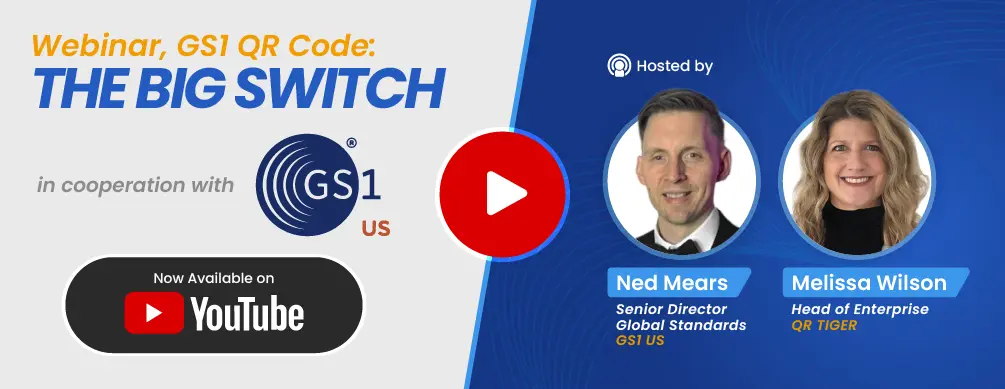The most advanced
GS1 QR Code Generator
Create a GS1 Digital Link QR Code
1D Barcode + QR in one
Why use a 2D barcode?
Better inventory and product management

Sustainability

Product authentication

Branding and marketing

- Generate
- Customize
- Sustainable & cost-saving
- Measure
About GS1 Sunrise 2027
GS1—a global system of standards with more than 100 member countries—is ushering in a new era in retail scanning. By the end of 2027, all 1D barcodes will be replaced by a GS1 Digital Link.أسئلة مكررة
A GS1 Digital Link QR Code—also known as a 2D barcode—is an advanced barcode that connects physical products to online information using global standards. It usually appears in a square format and holds information about a product—its manufacturer, product details, brand information, promotional content, and more.
Traditional 1D barcodes can only hold limited data, while GS1 2D barcodes can store much more information. 1D barcodes can be read with a laser barcode scanner, while 2D barcodes can be scanned using either a 2D scanner or a smartphone.
The GS1 digital link QR code is a smart tool for product identification, as it can contain all your product’s important information, such as:
Detailed product descriptions
Product information
Product identification numbers
Serial numbers
Lot numbers
Expiration dates
Specifications and manuals
Interactive content like videos and 360° product views
Special offers and promotions
Sustainability information and certifications
Links to your brand website or social media pages
There are numerous benefits to using GS1 2D barcodes: more data capacity, better accuracy, and the ability to add a variety of product information. Businesses can use it for enhanced customer engagement, real-time QR content updates, streamlined supply chain, and tracking.
Businesses must keep up with advanced technology like GS1 digital link and comply with industry compliance to address the growing demand for information transparency, supply chain traceability, and efficient product authentication across systems.
To create a GS1 QR code generator, you’ll need a GS1 Company Prefix. This unique identifier links your products to your company within the GS1 global system. You can then use a GS1-approved solution provider to generate your custom QR code and link it to the desired product information.
Generating a GS1 2D barcode may come at a cost, which depends on several factors. You may view our pricing here.
GS1 2D barcodes are typically larger than traditional barcodes. But like standard QR codes, their size may vary depending on the amount of data stored and the dimensions of the printed material.
Yes, most smartphone devices are able to scan GS1 2D barcodes using the built-in camera app.
No, you need a barcode scanner capable of reading 2D barcodes to scan a GS1 digital link. Modern point-of-sale systems have this capability.
As they are a global standard, GS1 2D barcodes are now being used across many industries, including manufacturing, pharmaceuticals, automotive, retail, and consumer goods. These codes help streamline supply chain management, inventory control, and product traceability.
Health institutions and professionals can use this technology to enhance operational efficiency, product traceability, recall process, distribution, patient safety, and more. For example, hospitals can use medical equipment GS1 barcodes to provide instant user manuals, proper equipment disposal, lifespan, maintenance information, and so on.
There are more applications, including:
Product information and authentication
Product recall management
Integration with electronic health records
Streamline inventory
The retail industry can use the GS1-powered digital link for inventory management, streamline operations, and stay competitive in the market or industry. For example, retailers can use the digital link for inventory management to have an accurate and updated count of each item.
Other uses include:
Streamline the checkout and payment system
Product transparency
Supply chain management
Data analytics and insights, and more.
It’s also essential for the manufacturing industry to use advanced technology like GS1-powered digital links to keep up with the fast-paced nature and evolving demands of consumers. Food manufacturers can use GS1 QR codes for food information to know more about the product.
Applications include:
Seamless product flow in the global supply chain
Improved quality control
Streamline production processes
Global trade and Interoperability


































